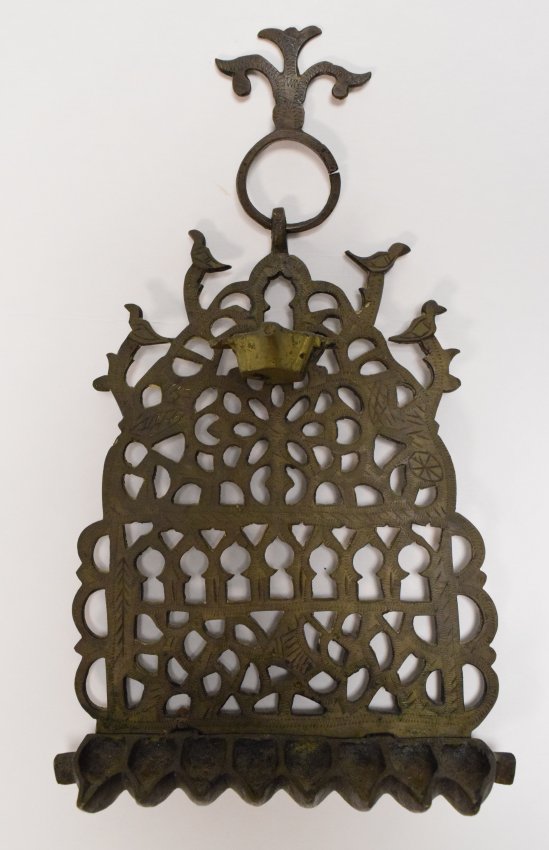Hanukkah Lamp
Copper alloy, cast and engraved, h. 12 15/16 x w. 7 3/8 x d. 2 3/8 in.
Morocco, 19th century
B’nai B’rith Klutznick National Jewish Museum Collection; gift of Olga Hirshhorn, 1994, 2015.17.361
Hanukkah is a post-biblical festival that recalls the deliverance of the Jews from the tyranny of the Syrian-Greek government in 165 B.C.E. This triumph is the first time in recorded history that a people fought for religious freedom. As the Jews entered Jerusalem and prepared to rededicate the desecrated Temple, they did not have enough oil to rekindle the lamps whose light would signify God’s eternal presence with them. According to the apocryphal book of Maccabees, a miracle occurred; a small vial of oil lasted eight days, long enough to find more oil and keep the lamps burning continuously.
The struggle to liberate the Holy Temple and the victory of the Maccabees over King Antiochus and his troops are recalled during Hanukkah by lighting a hanukkiyah, or Hanukkah lamp for eight days; each evening one more light is lit, so that on the eighth day all the lights are burning. A ninth light, the shamash (servant) is used to light the others.
The overall decorative quality of this Hanukkah lamp is reflective of the local architecture in Islamic communities of North Africa. The use of open-work arabesques, or never-ending curving lines, and arcades with keyhole and pointed arches is typical of Islamic architecture and is seen on both secular and religious buildings such as synagogues and mosques. Islamic law forbids artists to represent humans or animals, so Jewish objects made in this part of the world also tended to be devoid of human figuration. Here, four highly stylized peacocks sit on equally stylized branches on the upper section of the back wall of this lamp. They may have been intended to symbolize light and the kindling of the Hanukkah lamp, for Muslims associated the outspread tail of the peacock with light. This lamp was intended to be hung on a wall.

